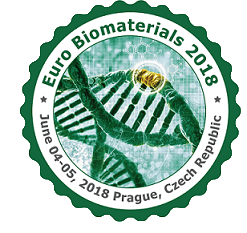
Deniz Atila
Middle East Technical University, Turkey
Title: Pullulan hydrogel-immobilized bacterial cellulose membranes for wound dressing
Biography
Biography: Deniz Atila
Abstract
When a full-thickness skin is lost due to trauma or diseases, wound bed can not be immediately repaired. Coverage of damaged tissue with a material other than patient’s own skin to prevent dehydration and infection can be an alternative. Thus, bilayer membranes may be candidates for satisfying requirements of top and sub layers of a potential wound dress. For instance, top layer should be dense and strong whereas sub layer should be porous and cyto compatible. Moreover, both layers should have high-water-absorbing capability. Membranes composed of bacterial cellulose (BC) produced by Acetobacter species have been widely utilized for different purposes owing to its excellent mechanical properties and pronounced water retention capacity. Pullulan (PUL) is another extracellular polysaccharide produced by Aureobasidium species possessing water solubility and gelation ability. Therefore, a membrane system composed of these materials can be formed by crosslinking PUL and attaching it onto BC layer to prevent delamination. Actually, PUL can effectively be immobilized on BC since it adheres to cellulose in nature. In this study, BC/PUL bilayer membranes were fabricated as a wound dressing composite for the first time in a simple and practical manner. BC produced by bacteria was purified and used in original form. PUL solution (20(w/v)%) was prepared in distilled water including trisodium trimetaphosphate (STMP) as a ‘green’ crosslinking agent (STMP/PUL(w/w):1/3) and NaOH was added into the PUL solution (NaOH/STMP(w/w):1/10) as an initiator prior to pouring the solution onto BC membranes. Crosslinking occurred within 12min. Optimizations for manufacturing membranes were completed and characterizations are under study.

